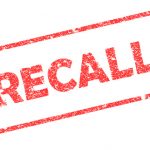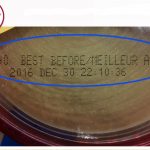Listeria monocytogenes continues to be a key factor in food recalls. While it is not the most common pathogen behind foodborne illness, it does have a high mortality rate. Listeria is hearty. It thrives in cold, moist environments, can grow under refrigeration temperatures and is salt tolerant. The risk of listeria contamination can be reduced through stringent sanitation, and environmental monitoring and testing. But far too often, it takes an outbreak or recall for companies to truly understand the efforts needed to find and destroy it in their facilities.
At Food Safety Tech’s Hazards Conference in Columbus, Ohio, in April, Stacy Vernon, Food Safety Operations and Program Manager at CIFT, an Ohio Manufacturing Partner, shared lessons learned from food companies that have experienced Listeria in their facilities and resulting product recalls.
Lesson Learned: Regulatory Requirements
The regulatory requirements related control of listeria monocytogenes can be found at USDA 9 CFR Part 430.4 and FDA 21 CFR Part 117. Both agencies offer guidance documents that serve as valuable resources that food companies can use to build their food safety programs:
FDA: FDA-2008-D-0096 “Control of Listeria monocytogenes in Ready-to-Eat Foods”
“The question is, are your people reading these? Are they aware they exist?” asked Vernon. “In speaking with companies who have gone through recalls, many were not even aware these guidance documents existed or were not utilizing them.”
Lesson Learned: Sanitation Program Shortcomings
“Sanitation is the No. 1 program that you need to have on point,” said Vernon. “Unfortunately, labor shortages and turnover have made this a big challenge in recent years.”
Issues that companies uncovered following recalls include:
- A lack of understanding of the difference between cleaning and sanitizing
- Sanitation teams not given enough time to properly sanitize equipment
- Lack of easy access to the tools needed to sanitize properly
- Lack of training on or understanding of the seven steps of sanitation
- Lack of training on what biofilms are and how to detect them
“Sanitation teams tend to be small, and they need to be everywhere,” said Vernon. “Are you looking at their foot traffic? Your sanitation team should get, at least, general training on food safety and pathogens. Make sure this department is not overlooked because they do pose one of the highest risks of cross contamination.”
Lesson Learned: Poor Sanitary Design
Companies cited similar shortcomings in sanitary design. Vernon recommended that companies implement the following practices, if they are not currently following them:
- Involve your food safety professionals in the purchase of new equipment
- If purchasing used equipment, make sure that it has been maintained
- Google “Sanitary Design Checklist.” These free downloads are available from the American Meat Institute, U.S. Dairy and other organizations and are great resources
- Look for facility and equipment design flaws, such as cracks or separations in the floor, exposed threads, hallow pipes not sealed, bad welds, and water/product accumulation points
“Drain maintenance is also key. One company uses a snake to swab their drains, so they know if they have listeria before it works its way back up into the facility,” said Vernon.
Lesson Learned: Poor Environmental Monitoring Programs
The goals of an environmental monitoring program (EMP) is to aggressively seek and destroy pathogens. “You need to know where listeria is entering the facility, where it harbors and how it moves in your facility so you can effectively eradicate it,” said Vernon. “There is still a mentality that people are scared to find it, so they swab the safest areas. We need to change that mindset to ‘I want to find it and I want to eliminate it.’”
EMPs need to be tailored to your specific facility. Some of the issues companies found with their EMPs following recalls included a lack of internal knowledge to build a comprehensive and custom program and failure to swab properly. “Ask yourself, who is responsible for setting up our EMP and can they do it alone, or do we need outside expertise?” said Vernon.
When swabbing, you need to apply pressure and seek out hard to reach areas. When determining which zones to swab, consider the following:
- Your risk assessment and hazard analysis
- Previous environmental monitoring data collected
- Visual appearance of surface
- Products produced and intended users
- Potential for growth after packaging
“Focus on areas where RTE products are exposed. Companies often do not want to swab Zone 1, but one company that went through a recall has implemented swabbing in Zone 1 while they are sampling their products,” said Vernon. “Their reasoning is, the products are already on hold and if they have to throw one shift of product away, it costs much less than a recall or outbreak.”
Lesson Learned: Lack of Employee Knowledge
Several of the companies Vernon spoke with found that they had inadequate food safety and pathogen training and knowledge at all levels; and that they did not have a good sense of employee traffic flow and habits. “When is the last time you stepped back to evaluate traffic flow in your facility?” asked Vernon. “Companies that took the time to evaluate traffic flow and employee practices were often surprised that they did not understand their employees’ movement within the facility or work habits.”
Key areas to investigate include:
- How do employees and product move through your facility?
- What is your footwear policy?
- Are employees following appropriate GMPs for handwashing, PPE, product handling, etc.?
- Are sanitation employees cleaning properly?
“Changing employee practices doesn’t take a lot of capital,” said Vernon. “It is one of the cheapest ways to mitigate risk.”
Lesson Learned: Not Reassessing Programs
EMP and sanitation programs should be reassessed when findings occur or changes happen in the facility, including anytime you bring in new equipment. “Start with a document review and then reassessment of your environmental monitoring program,” said Vernon.







